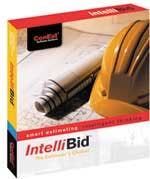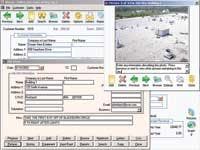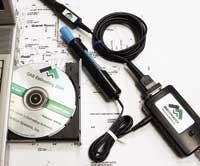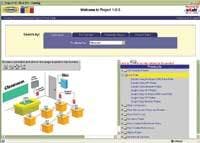Uncovering the benefits of estimating software
Features and capabilities can improve bidding accuracy and efficiency for those willing to take the plunge.
The success of a company can hinge on the accuracy and efficiency of the bidding process. For cabling contractors, overpriced bids may not be considered while underpriced bids can mean leaving money on the table with each installation.
The estimating of material and labor costs that goes into each bid typically involves completing a materials take-off from computer-aided design (CAD) drawings included in construction documents. When the take-off is complete and quantities totaled, the final materials list is sent to distributors for pricing. Once the best pricing on materials is obtained, several other costs, such as labor, overtime, insurance, travel expenses, and taxes, must be calculated before finalizing the bid.
Estimating requires careful consideration and scrutiny of many variables, which can take up to a full day for a small office and up to several weeks for a large campus installation. Every contractor, big or small, is faced with the challenge of completing the bid on time, including every item and associated labor, and ending up with a price that’s low enough to win and high enough to profit.
The challenge may be the same for all, but the process varies from contractor to contractor. Many still use in-house spreadsheets while some have migrated to more sophisticated estimation software systems that enable product selection, assembly building, labor calculations, and comprehensive reports and proposals. While recent features and capabilities added to estimating software can dramatically improve the accuracy and efficiency of the bidding process, it may not be for everyone.
Spreadsheet satisfaction
“I don’t know of any datacom contractors using estimating software to do their take-offs and cost estimating. Most use their own spreadsheets, and they’ve been doing it that way for years,” says Craig Gilian, senior design consultant and operations manager for Austin, TX-based DataCom Design Group (www.datacomdesign.com), a professional organization that provides technology design and consulting services. “The idea of spending the time and money to learn a new estimating software program is just not a priority for many contractors, especially if they’ve been successful with the system they have in place.” Gilian sees estimating software as better suited for large national contractors who have the need to standardize across several locations.
Dallas-based Walker Engineering (www.walkertx.com) is one contractor that has relied on its in-house Microsoft Excel spreadsheet system for many years. “We’ve modified our spreadsheets over the years, and they include project management and administration costs, as well as spaces for rental equipment, vehicle costs, and even storage containers if needed,” explains Mike Clark, RCDD, senior project manager with Walker Engineering. “It’s a system that has worked well for us for several years, but estimation software with all manufacturer part numbers that are updated quarterly would be ideal.”
A contributing factor to datacom contractors’ continued use of in-house spreadsheets is that many estimating software programs stem from the electrical industry. “Because it doesn’t suit their needs, many datacom contractors recoil from the electrical-based estimating software,” says Dan Walkovitz, president, Mainstay Software (www.mainstay.com). “And unfortunately, when a datacom contractor is an entity of a larger electrical company, there’s often a reluctance to spend money on estimating software specifically designed for datacom.”
The datacom contractors at Walker Engineering can relate. “For quite some time, our network division has been trying to work its way towards the same software used by our electrical department, but with some degree of difficulty,” says Clark. “It’s difficult and time-consuming to set up because of the many different kinds of products that we use in our daily work.”
Using in-house spreadsheets, however, presents its own set of challenges. “There are many variables that have to be looked at carefully,” says Clark. “If, like us, you use a spreadsheet for most of your estimating, it is very important to spot-check the formulas on a regular basis to ensure that everything is working properly.”
Alternatively, formal estimating software can provide formula consistency and effective information organization . “Consistency is key in being able to look back at historical data, and modify labor units and cost codes as needed,” says George Hague, president and founder of ConEst Software Systems (www.conest.com). “If the estimating process is not consistent, there is no basis for comparison.”
Electrical expansion
Electrical estimating has been around for more than half a century, and in recent years, it has expanded to include datacom products. The Craftsman Book Company, which has published estimating cost books since 1951, recently launched its new Site License estimating software and data. Customers can download Craftsman’s National Estimator program and estimating databases that cover a variety of construction-related topics. National Estimator does not do material take-offs, but is strictly a cost estimating program that assumes the user already knows the quantity of material required. The electrical database includes several communications products, including raceway, cable tray, grounding and bonding products, cable, and connectors.
In 2000, estimating software provider McCormick Systems (www.mccormicksys.com) added voice/data/video products to its electrical product database. “We provide both electrical and datacom items in our database because many of the items cross over between the two industries, such as conduit and boxes,” says Richard Manrod, application support and trainer for McCormick Systems. “Our advanced systems enable users to build assemblies on-the-fly that consist of up to 250 byproducts or other assemblies. This is a huge advantage in datacom estimations where there is a lot of variation.” Once the user builds an assembly, he says, it can be saved from job to job or inserted in the main database.
McCormick Systems’ estimating software is designed to let you easily change quantities or prices, add labor multipliers based on type of work or level of difficulty, and view comprehensive graphs and reports for checking the estimate. “Graphs are extremely valuable and enable the user to compare total labor, material, taxes, and profits,” says Manrod. “With our reporting capabilities, users can print out material reports to request pricing from their distributor, break out pricing based on the type of work involved, and create comprehensive proposals.”
McCormick Systems software comes with a patented count and length probe for taking items and lengths directly off of the CAD drawings, while their CAD estimating software interfaces directly with AutoCAD to automatically take off home runs and symbols. “With CAD estimating, the user can attach a specific assembly to a block so that each time they enter that block, all the parts are included in the estimate,” says Manrod.
In the late 1990s, ConEst Software Systems hired several RCDDs to create DataBid, a database of labor units and more than 60,000 data-cabling products and 15,000 assemblies from leading manufacturers. Data Bid can be added to any level of ConEst’s IntelliBid estimating software, originally designed for the electrical contractor. “We update and enhance the DataBid database regularly, and users can flag items and assemblies that they’ve added or modified so they can easily copy them into the updated database,” says ConEst’s Hague.
IntelliBid’s functionality enables searching the database by item, manufacturer’s catalog number, or IntelliBid’s items number. An Auto Labor Factor enables automatic price adjustment for various types of work. “If multiple cables are being pulled at once, Auto Labor Factor automatically reduces the labor per cable,” says Hague. “The labor factors can also be modified as necessary.”
Mark White of New England-based Interstate Electrical Network Systems (www.interstateelectrical.com) relies on ConEst’s IntelliBid software for estimating. “IntelliBid software is a vital tool at Interstate,” says White. “It enables our staff to estimate accurate material and labor pricing on every project while providing the estimator with the tools needed to handle the multitude of system design options in an ever-changing data environment.”
All-in-one, or just datacom
For contractors looking for all-in-one business management software, Wintac Pro from Intac International Inc. (www. intacinternational.com) includes customer and inventory management, scheduling, dispatching, equipment tracking, invoicing, payroll, accounting, marketing, and wireless mobile computing in addition to job costing and estimating. Wintac Pro’s estimating portion includes the ability to instantly look up and insert items, print customizable proposals, and import data from spreadsheet applications to easily convert from in-house estimating spreadsheets.
RapidBOM, offered by Mainstay Software Corp., is promoted as the only estimating software designed solely for data communications. “RapidBOM was never an electrical product; it was built for datacom people by datacom people,” says Rob McCallum, director of marketing for the company. “The entire interface and flow is voice- and data-specific, enabling users to build the estimate hierarchically, cross-connect by cross-connect, closet by closet, workstation by workstation, and drop by drop.”
RapidBOM’s interface displays products based on a specific area of an infrastructure. For example, when adding a workstation, the categories of products from which to choose include cables, jacks, and faceplates. “The program contains many different filters to quickly narrow down the product selection,” says Walkovitz. “Users can select variables like shielded or unshielded, Category 5e or 6, plenum or non-plenum, and they can select a specific brand name.”
RapidBOM includes a regularly updated product database containing more than 100,000 products from more than 130 cable and connectivity manufacturers that eliminates the need to look up product information in catalogs or online. “We maintain the database with manufacturers on a regular basis, and also provide cut sheets so users can make sure it’s the product they need,” says Walkovitz. RapidBOM users also can add products to the database and only view items user-defined as “preferred.”
RapidBOM’s margin analysis feature calculates taxes, travel, overhead, and labor costs. Several reports enable bid analysis, and a Validate Project function compares the final infrastructure to TIA/EIA and BICSI standards. “The validation function alerts the user to possible problems, such as insufficient ports in a cross-connect to support the number of workstations,” explains Walkovitz. “RapidBOM doesn’t ensure that you’re going to remember everything, but it creates a structure where deficiencies are obvious.”
Recently added features to RapidBOM include the ability to duplicate elements, including defined kits (assemblies), closets, or even entire floors, and the ability to label certain areas as “existing,” which is ideal for subsequent phases of an installation. The addition of an outside plant (OSP) version is perhaps the software’s most significant enhancement to date. Besides an OSP product database, the OSP version includes algorithms for estimating trenching, boring, cutting, sand, and other OSP processes.
“There is currently no other software product on the market that offers OSP estimating for data communications,” says McCallum. He notes that Mainstay Software is currently considering private-labeling the RapidBOM software with cable and connectivity vendors.
Vendors who do it their way
Some datacom vendors already offer their own estimating software. Members of Hubbell Premise Wiring’s (www.hubbell-premise.com) Hubs Club can take advantage of Hubbell’s new Web-based Project 1-2-3 for designing and estimating an infrastructure with Hubbell products. Project 1-2-3 includes up-to-date product content and preformatted templates with pictures of subsystems that are dynamically linked to the BOM. According to the company, Project 1-2-3 lets Hubbell contractors collaborate on a system design and BOM directly with Hubbell personnel and distributors.
Pricing perils
While estimating software systems may not be for everyone, datacom contractors and software providers alike agree that pricing is the biggest challenge when it comes to datacom estimating. Unlike the electrical industry with its established pricing services, the price of datacom material varies tremendously. “Contractors asking for a quote on a particular date at a particular distributor will get a different price depending on quantities and on the amount that the contractor has purchased in the past,” explains Mainstay’s Walkovitz.
The perils of pricing caused ConEst Software Systems to recently link its IntelliBid software to NetPricer (www.netpricer.net), a Web-based service offered by ElectricSmarts.com that connects directly to participating distributors to obtain accurate, negotiated pricing specific to a contractor. “Material pricing is definitely the biggest challenge in the datacom industry, and that’s why we now interface with NetPricer,” says Hague. “I’ve seen contractors change from distributors who don’t participate with NetPricer, just so they could get their pricing quickly over the Internet.”
While material pricing remains a challenge, Clark of Walker Engineering also points to constantly changing specifications as another key estimating challenge. “Estimating removal of abandoned cable to comply with new specifications is tough, and requesting a site walk-through prior to bidding is a must,” says Clark. “If there is a substantial amount of abandoned cable, and if the copper market is on your side, you can include the scrap revenue in the bid to be more competitive.”
Despite the challenges and number of contractors still using in-house spreadsheets for estimating, software providers remain optimistic. “The datacom industry is in the process of change, and I believe many are starting to see the need for a more formal estimating system,” says Hague.
“Estimating is a risk-prone process, and the unorganized tabular layout of spreadsheets triggers the tendency to overlook items,” says Walkovitz. “Our estimating software addresses the fundamental problem of bidding fast enough and accurately enough.”
Providers of estimating software packages and systemsThe following companies provide software packages and/or online resources for estimating cabling projects. For more comprehensive information about each company and its offerings, visit the respective companies’ Web sites.
Accubid Systems, www.accubid.com.Provides software packages, including Accubid Pro, BidWinner, PowerBid, Pocket Bid, and Accubid Enterprise Estimating, for electrical and mechanical trades.
The American Contractor, www.theamericancontractor.com. Offers software for construction and service contractors. In addition to job estimating, packages handle accounting, payroll, job-cost tracking, work orders, and inventory.
The Craftsman Book Company, www.craftsman-book.com.Publishes the “National Estimator” series of costbooks and CD-ROMs that include product databases. Among the series is “National Electrical Estimator.”
ConEst Software Systems, www.conest.com. Offers its flagship IntelliBid estimating package, available in Lite, Pro, and Plus versions. Also offers DataBid and IntelliBid Design Build packages.
Estimation, www.estimation.com. Specializes in estimating software for electrical, mechanical, plumbing, and HVAC contractors. Software offerings also include materials management, service management, and project forecasting.
Hubbell Premise Wiring, www.hubbell-premise.com. This manufacturer of connecting hardware also offers Project 1-2-3, a system that lets contractors design and estimate a cabling project using the manufacturer’s products.
Intac International, www.intacinternational.com. Provides Wintac, which it describes as an all-in-one business-management software package. Capabilities include estimating, customer tracking, business scheduling, invoicing, and payroll.
Mainstay Software, www.mainstay.com. Offers RapidBOM, an inside- and outside-plant telecommunications network estimating and development system. Its electronic product catalog is regularly updated.
McCormick Systems, www.mccormicksys.com. Provides a line of estimating and management software that handles such tasks as job estimating, time and material billing, and change-order mangement. Its CAD Estimating package interfaces directly with an AutoCAD software system.
Vision Infosoft, www.visioninfosoft.com. Offers estimating as well as time-and-materials-billing software packages for electrical and plumbing contractors. Estimating package is available in Basic, Plus, and Pro versions; time-and-materials package is available in Basic and Plus versions.
BETSY ZIOBRON is a freelance writer covering the cabling industry, and a regular contributor to Cabling Installation & Maintenance. She can be reached at: [email protected]






